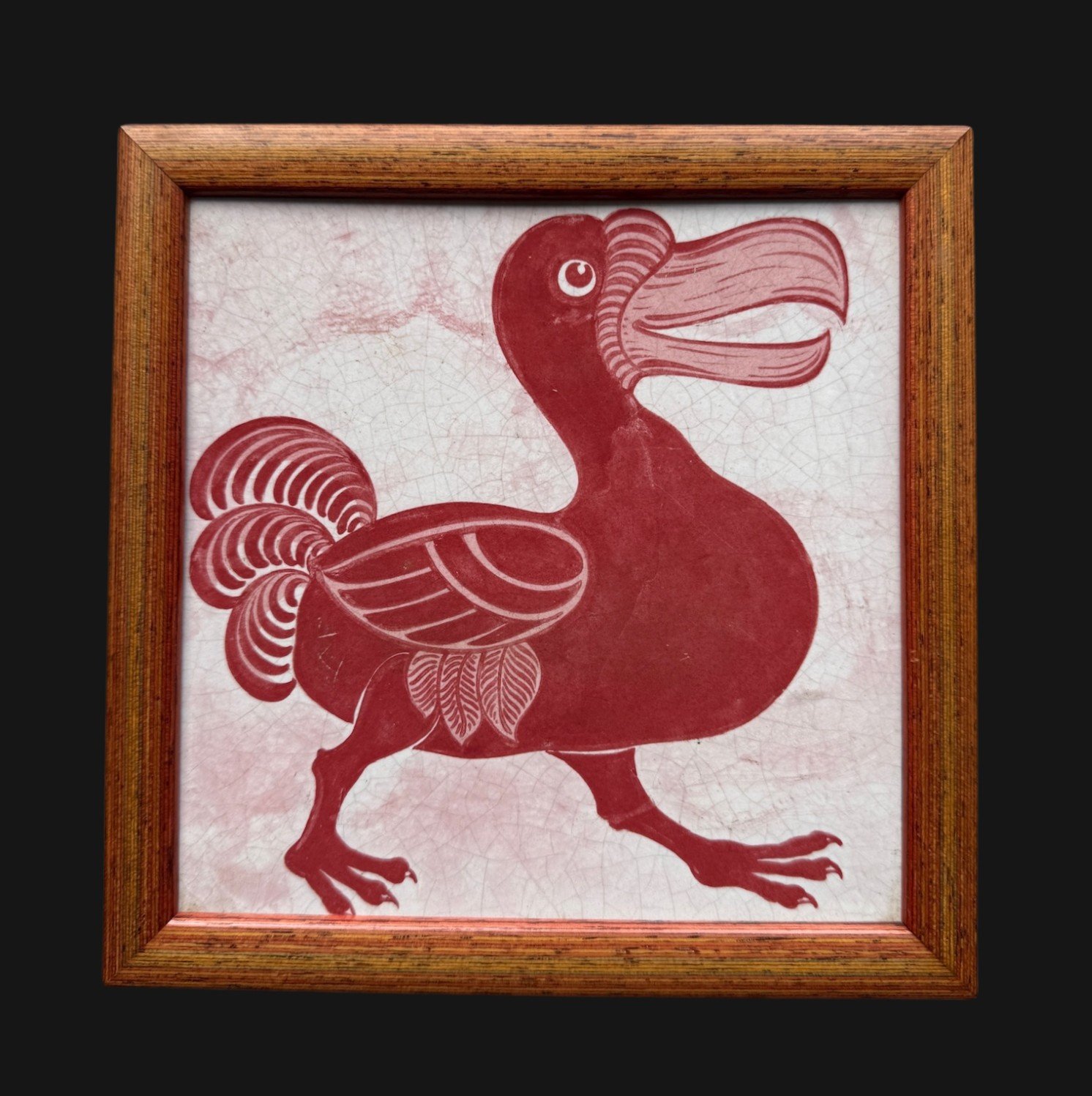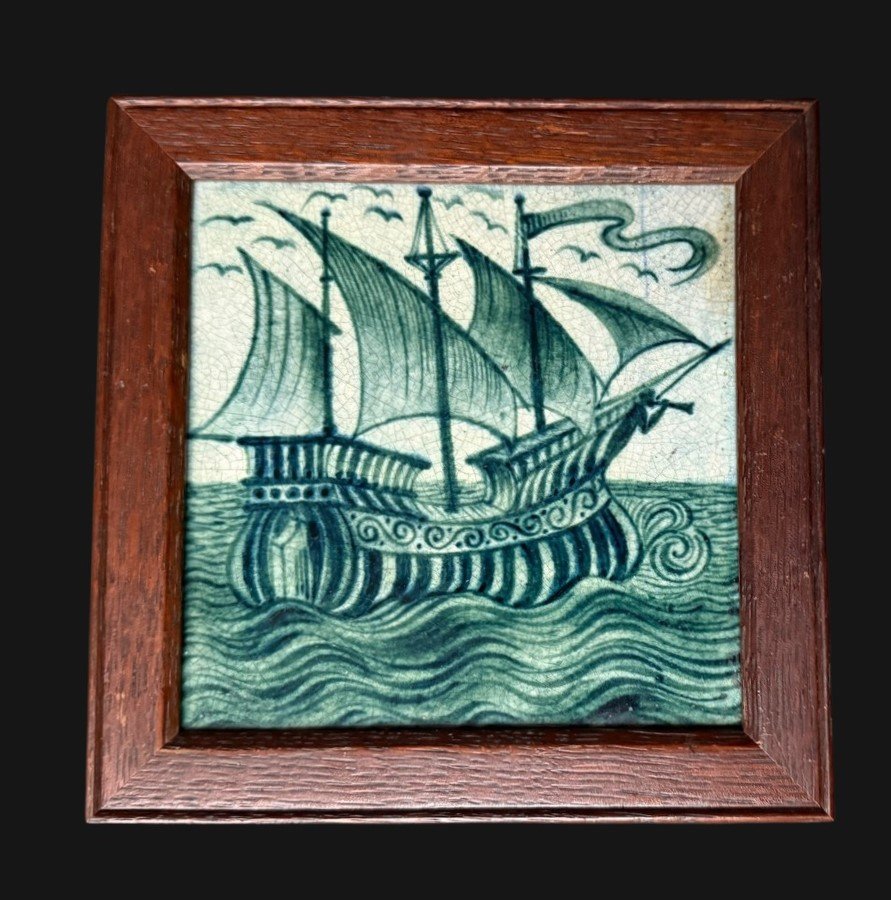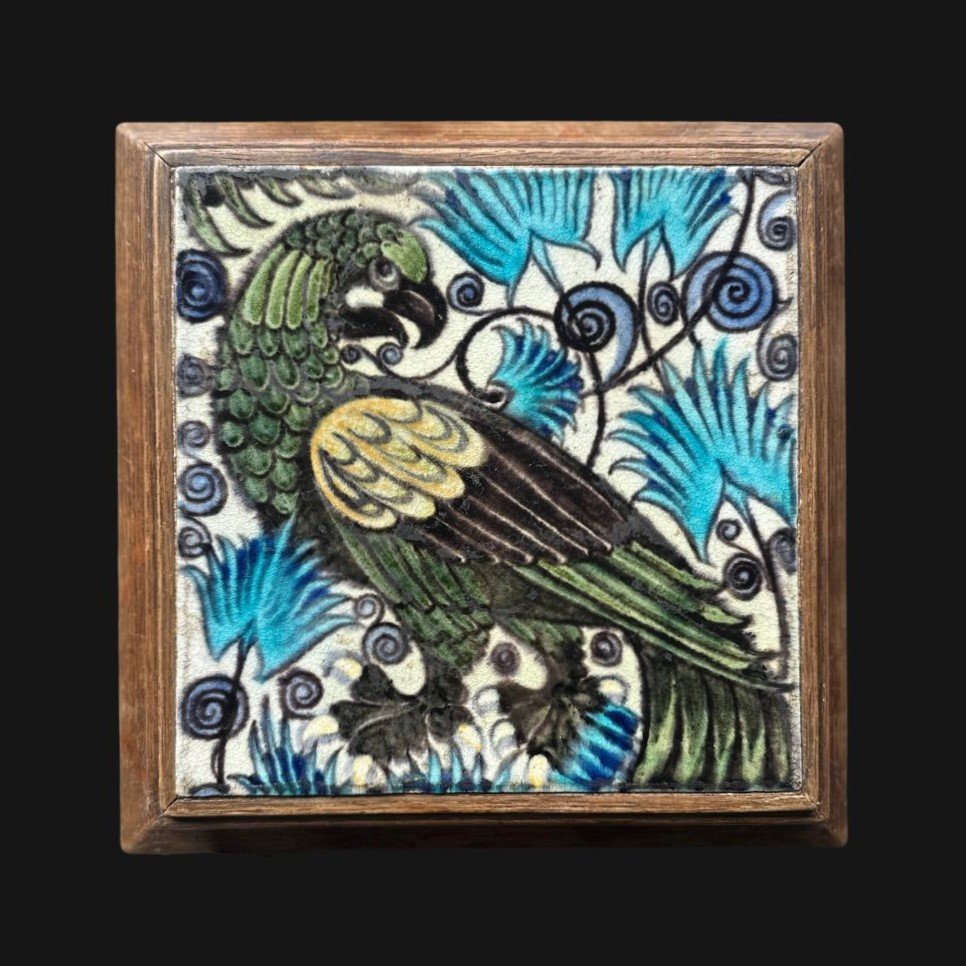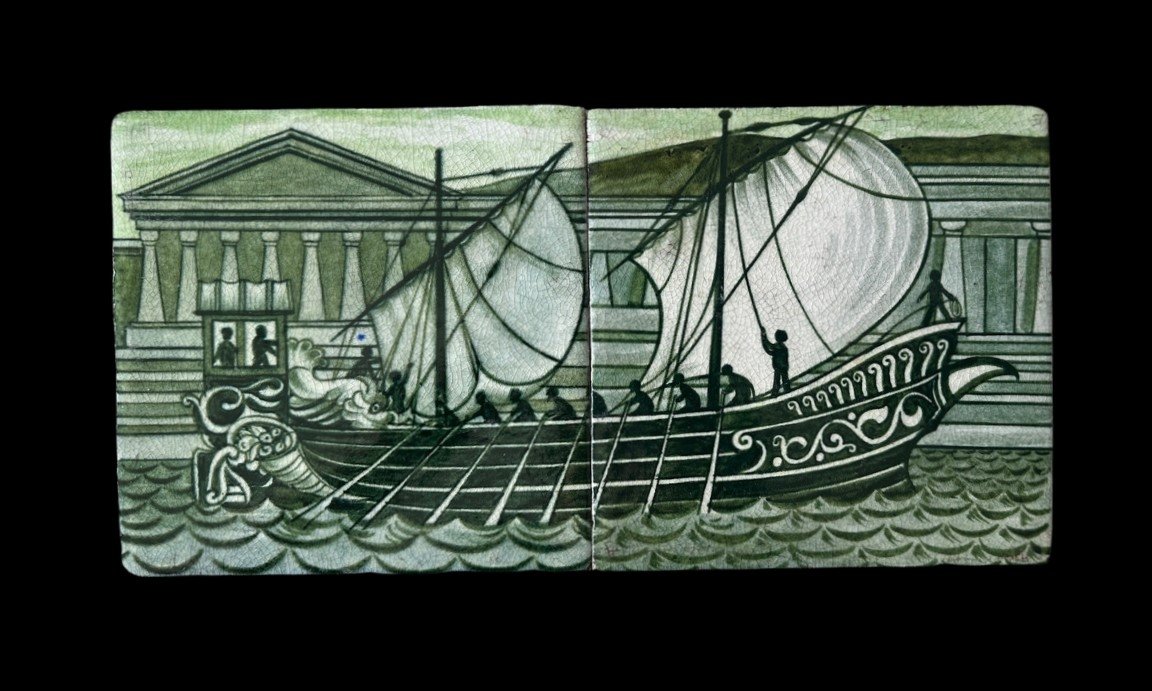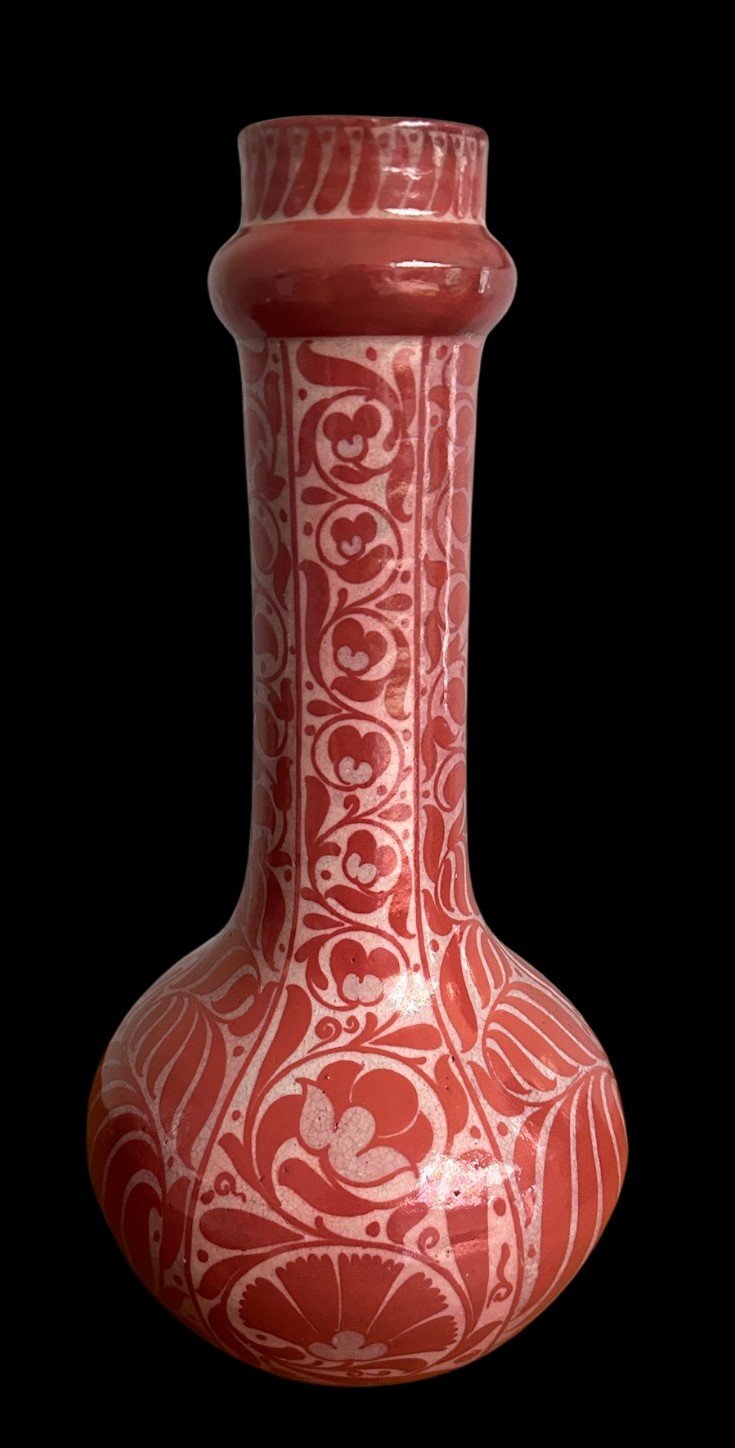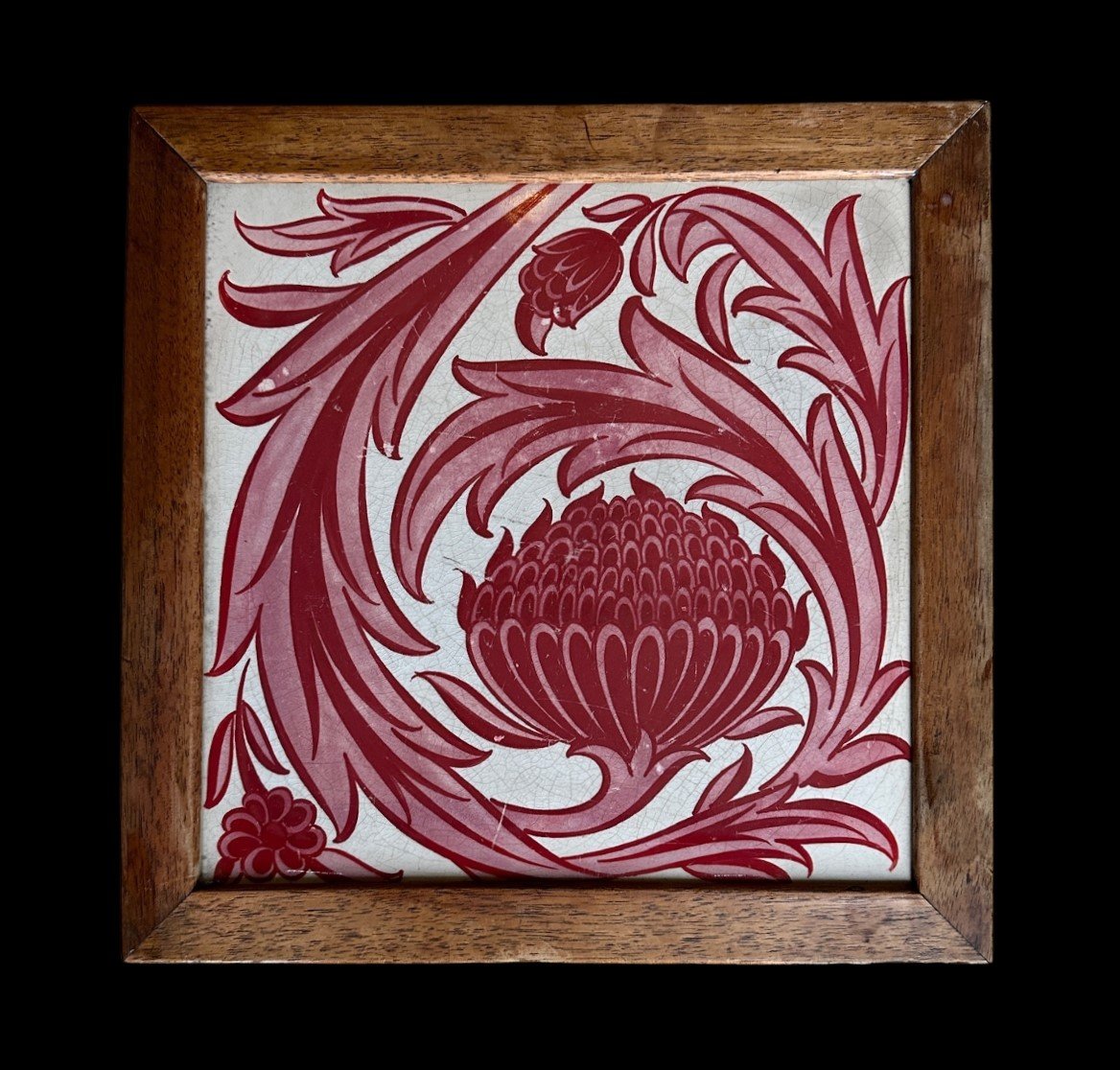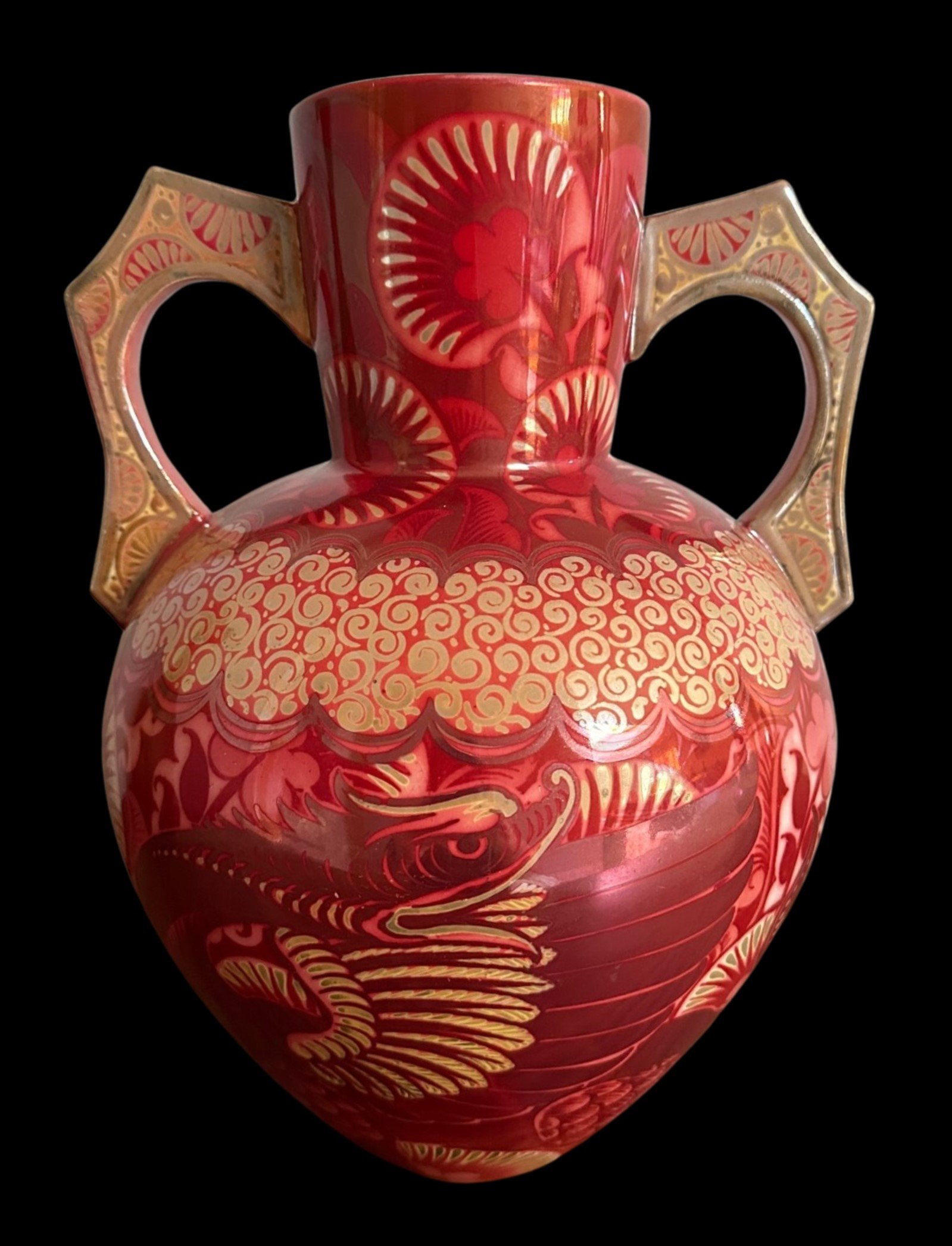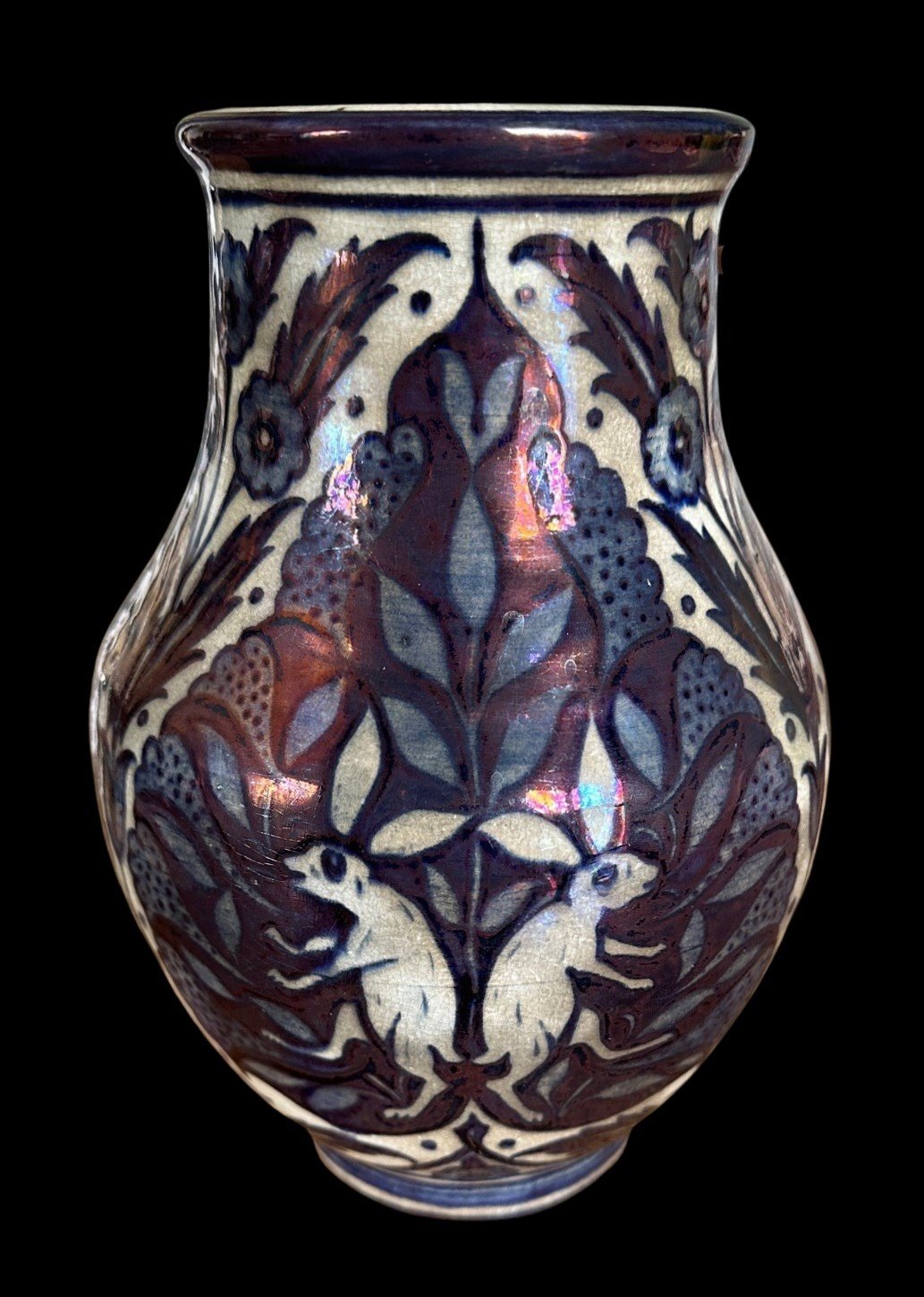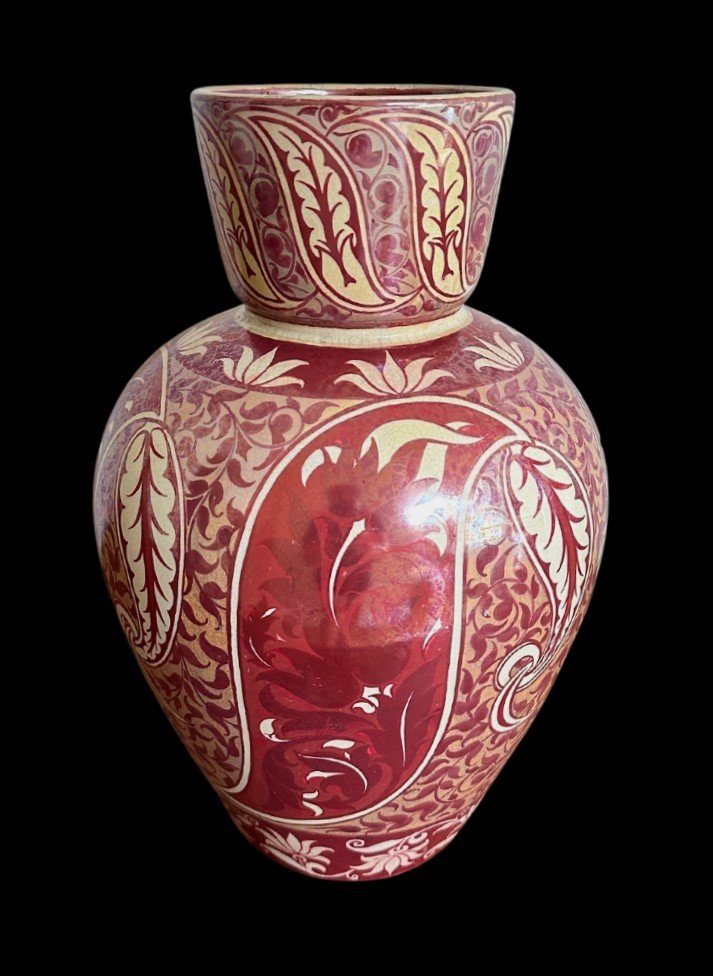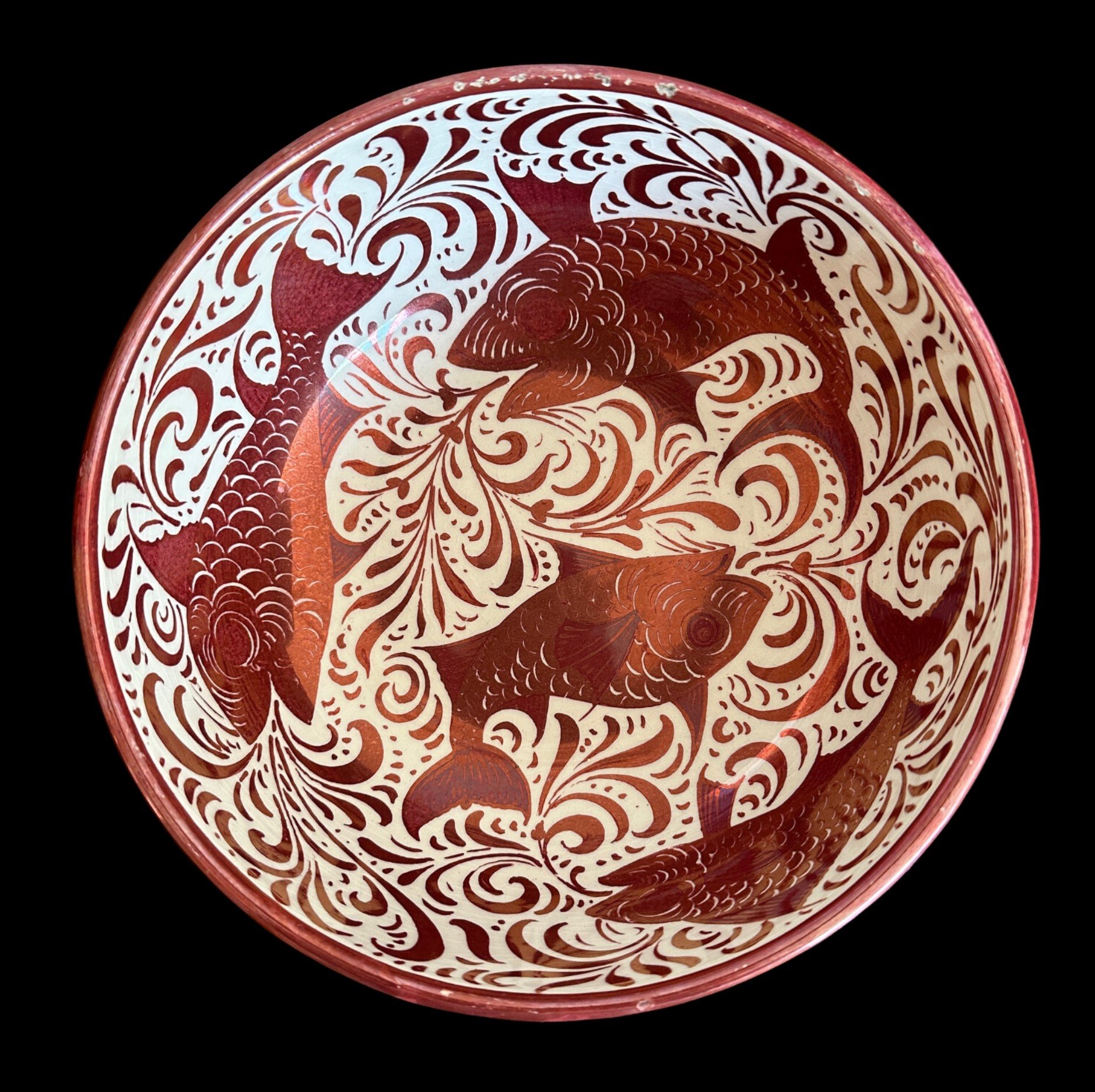William De Morgan
De Morgan worked closely with some of the other historical figures of the Arts and Crafts movement such as William Morris and Burne-Jones and was a founder member of the Arts and Crafts Exhibition Society.
Initially de Morgan decorated blanks, using tiles from Holland and ceramic vessels from J.H. and J.Davis, Staffordshire and fired his pieces in a kiln constructed in his Family home in Fitzroy square, London (Circa 1869). In 1872 he moved to Chelsea where he also developed a retail outlet for his production and employed the service of the Passengers to assist in the decoration of the wares. In 1882 he moved again to Merton Abbey, London where his production of ‘in house’ pottery stopped his reliance on bought-in blanks.
As de Morgan’s technical expertise developed his range of glaze techniques multiplied and by 1888 when he moved to Sands End, Fulham he was consistently producing high quality double and triple lustre glazes.
De Morgan’s glazes were principally divided in two, the Persian ware in a Middle-Eastern palate and lustre glazes in single, double and triple colour ways. Designs were typically Arts and Crafts designs: animals, galleons, stylized floral motifs and mythical beasts and these were transposed to chargers, bowls, vases and tiles.
From 1882 with failing health, the production of the factory was left in the hands of the Passengers who continued to receive designs from de Morgan from his Florence home. De Morgan retired in 1907 but his inspiration continued under the stewardship of the Passengers who set up their own company “Bushey Heath” producing both Persian and lustre glazes from 1921 – 1933.
Subscribe to the William De Morgan Mailing list
Stock for sale
